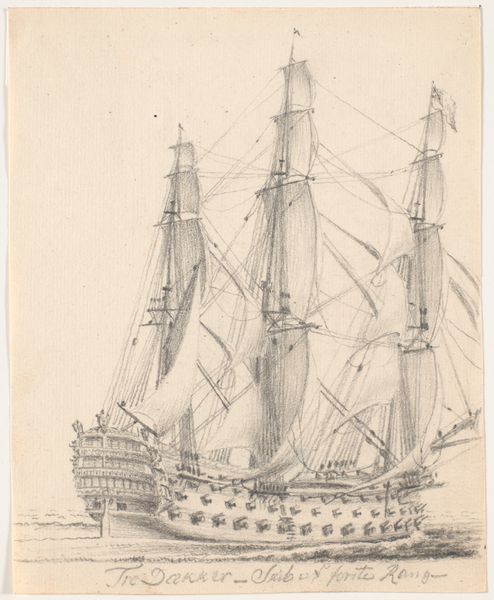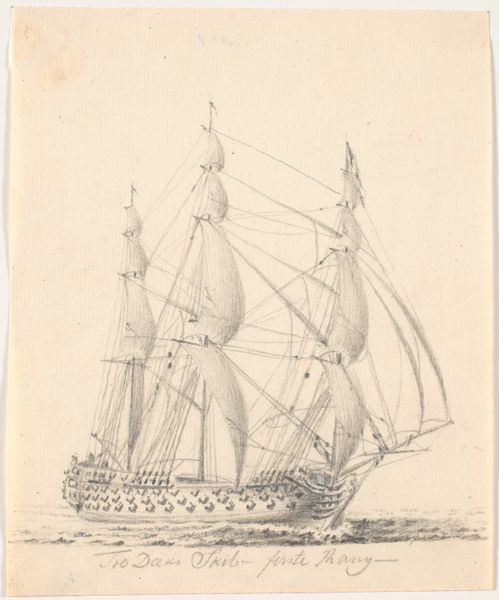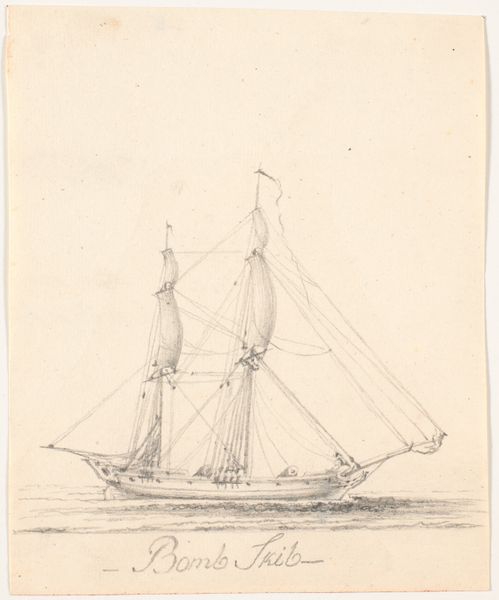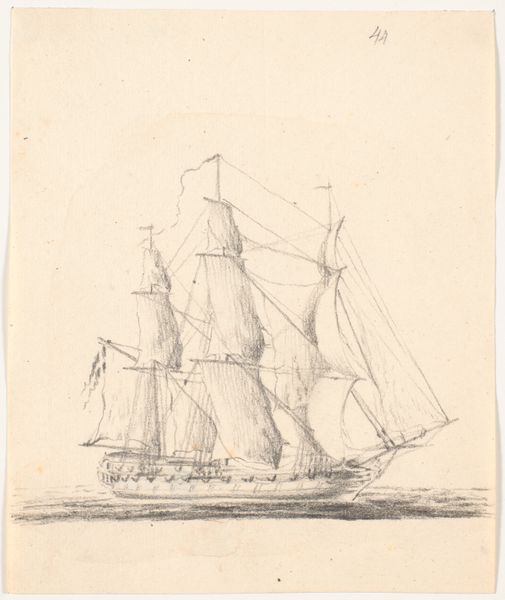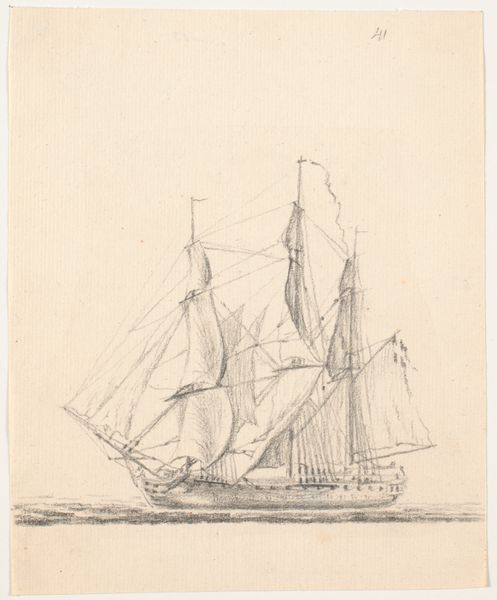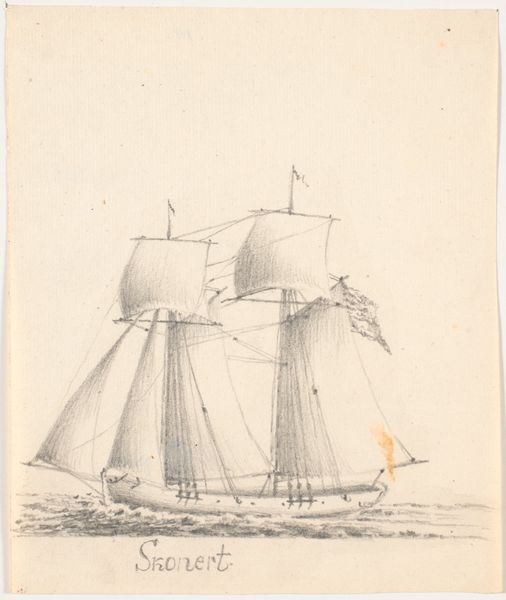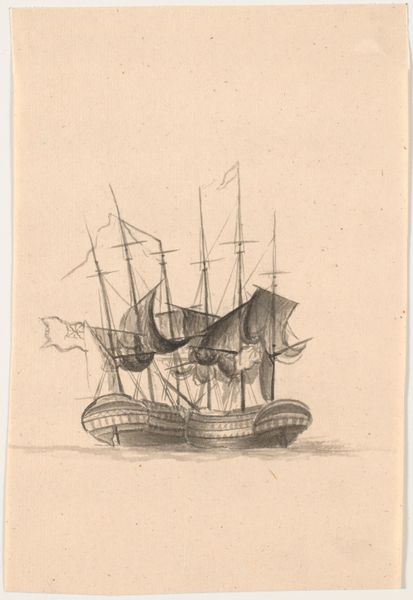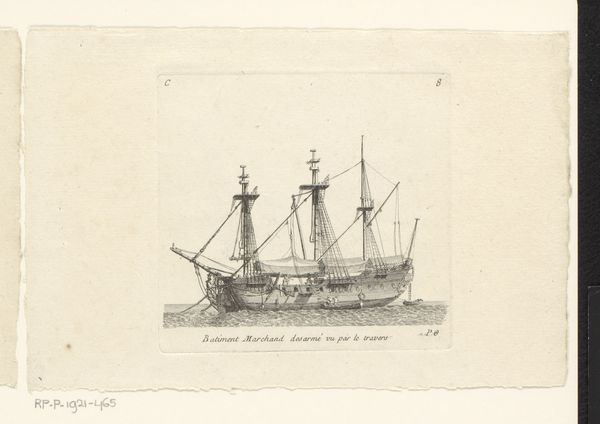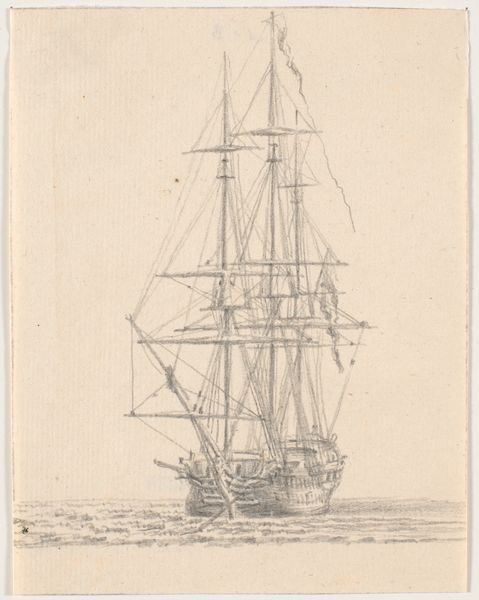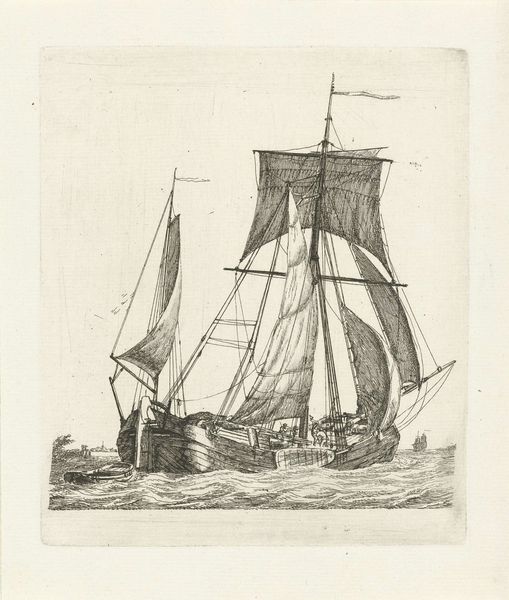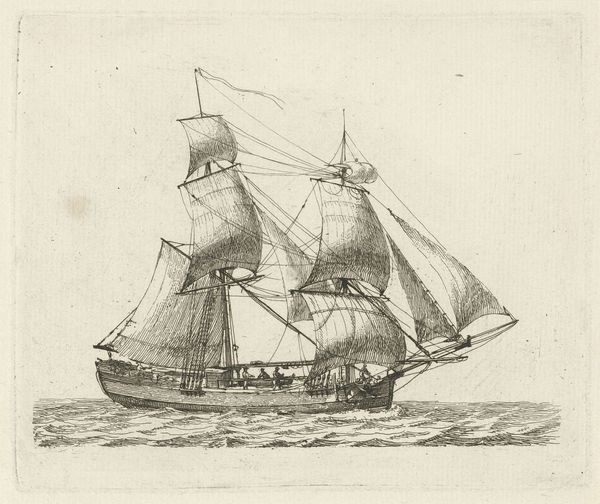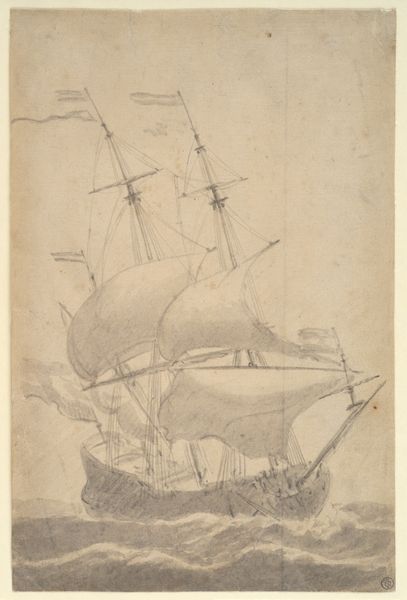
drawing, paper, pencil
#
drawing
#
landscape
#
paper
#
pencil
#
realism
Dimensions: 200 mm (height) x 161 mm (width) (bladmaal)
Curator: I’m struck by the precarious energy emanating from this modest pencil drawing, so delicate in its rendering. Editor: That's precisely what I noticed; there's such immediacy in the draughtsmanship. What can you tell us about the work itself? Curator: This is "Fregat for fulde sejl," which translates to "Frigate in Full Sail," by C.A. Lorentzen. The work is dated somewhere between 1746 and 1828. As you noted, it's executed in pencil on paper. The Statens Museum for Kunst holds this piece, so the Danish maritime tradition looms large, here. Editor: A pencil sketch really captures the fleeting impression of a ship at sea so well. I'm immediately thinking of the Romantic notion of the sublime—the ship against a vast and unknowable ocean. Did ships represent anything specific for the Danes at this time? Curator: Absolutely. Frigates, such as the one depicted here, are not just vessels, they're potent symbols. Denmark's relationship with the sea has shaped not just the economy but also its political standing for centuries. A ship such as this would connote ideas of trade, national power, exploration… Editor: But it's also intriguing that Lorentzen chose to present this symbol of Danish power in such a vulnerable medium, pencil on paper. A drawing lends an immediacy, doesn't it? Almost as if the artist were jotting down the image for future reference. It almost gives a more realistic sense than oil painting would. Curator: Yes! It's this interplay between a rather mundane medium and the grandeur of the subject that fascinates me. I think there’s some commentary on what a national symbol represents beyond the ship, it shows the culture, hard-work and community of this nation. Editor: The use of pencil captures a feeling of on-the-spot reporting from life rather well too; what's interesting to me is to think of what it symbolizes to us in the 21st century—are we still as romantic about such maritime symbols, or are we more likely to reflect on issues of trade and ecology when looking at this frigate? Curator: An interesting point, indeed; perhaps it becomes more about memory, then? Maritime trade has irrevocably changed with globalization, but cultural memory remains, embedded in our artistic inheritance, whether we seek it or not. Editor: Very eloquently put. I’ll carry this sense of both grandeur and fragile, fading memory, with me as I walk away from this image.
Comments
No comments
Be the first to comment and join the conversation on the ultimate creative platform.
